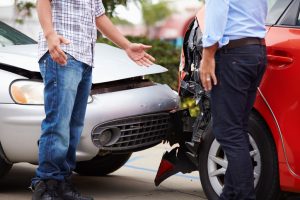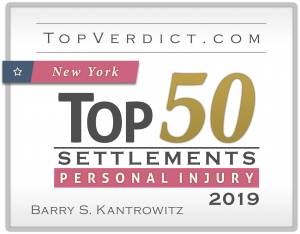 Uninsured Motorist Accident
Uninsured Motorist Accident
The personal injury protection (PIP) laws — also referred to as “no-fault laws” — of New York and New Jersey make it less likely for drivers to be uninsured, but it still happens. Unfortunately, any car accident can be made much more complicated when it involves an uninsured or underinsured motorist.
When you are injured by an uninsured driver, recourse is more difficult, making the road to financial, emotional, and physical recovery more challenging. The uninsured motorist accident lawyers at Kantrowitz, Goldhamer and Graifman are here to guide you through the insurance process and help you determine whether to file a personal injury lawsuit.
What is uninsured motorist insurance coverage?
State laws generally require drivers to carry enough insurance to cover the damages should they be at fault in a serious accident. When a driver does not carry this insurance, he is referred to as an uninsured motorist (UM), and when he does have insurance but the limits are not high enough to cover a claim, he is called an underinsured motorist (UIM). In insurance documents, the coverage for these claims is often referred to as “UM/UIM coverage”.
What does uninsured motorist protection typically cover?
Uninsured and underinsured motorist coverage is something that drivers purchase to protect themselves from the carelessness of others. Whether a driver has UM/UIM coverage, and when it applies, depends on what auto insurance the state requires drivers to have.
New York and New Jersey have adopted different auto insurance laws and the differences also affect how and when uninsured motorist coverage operates in each state.
Do I need uninsured motorist coverage in New Jersey?
In New Jersey, lower-priced policies do not include bodily injury liability coverage and only offer limited property damage liability coverage. That means if you are injured by a driver with one of these policies, or without insurance at all, your own UM/UIM coverage may be your only realistic recourse.
New Jersey follows a “choice” no fault car insurance system. Drivers must elect between:
- Basic policy – Carries $15,000 in PIP, or $25,000 in certain cases. Provides just $5,000 in property damage liability coverage and no bodily injury liability coverage unless optional coverage is purchased. Policy holder has only a limited right to sue an at-fault party, when the injury is serious and meets the requirements listed in the law.
- Standard policy – Carries between $15,000 and $250,000 in PIP. Covers between $5,000 and $100,000 in property damage and between $15,000 and $100,000 in bodily injury liability. Also provides uninsured and underinsured motorist coverage up to the limits matching the selected liability coverage. Policy holders select between a limited or unlimited right to sue. A limited right policy is cheaper but only allows an injured person to sue for economic losses like medical bills – not for pain and suffering – unless the injuries meet the threshold for seriousness. An unlimited right costs more but allows the victim to sue for any losses, no matter how minor, whether economic or non-economic.
Drivers who opt for a basic policy do so knowing that they will be personally responsible for injuries that they cause that are not covered by bodily injury liability coverage. However, drivers who choose this option typically do so because they do not have extra resources to pay for insurance premiums, let alone pay damages to an injured driver. When faced with a New Jersey UM/UIM car accident, your best option is to consult with a Bergen County uninsured motorist car accident lawyer who can explore all options with the benefit of experience.
Will I have uninsured motorist coverage in a car accident in NY?
If you have the required auto insurance insurance in New York, you will also have some UM/UIM coverage, with the option of purchasing more.
The law in New York State requires motorists to carry a minimum amount of liability insurance starting at $25,000 for bodily injury and $10,000 for property damage. It also requires “no-fault” coverage of $50,000, which pays for the policyholder’s injuries regardless of whether they were caused by the driver himself or someone else’s negligence. This “no-fault” coverage does not pay for non-economic losses like pain and suffering.
NY law also requires that all auto insurance policies provide UM coverage. This pays for bodily injury at the same minimums as the policy’s liability minimums. Policyholders can also purchase additional coverage known as SUM (Supplementary Uninsured/Underinsured Motorists) in an amount up to the bodily injury liability limits of his or her own policy.
Under NY auto policies, a driver’s own PIP insurance covers the first $50,000 in economic damages, like medical bills, regardless of fault. To file a lawsuit against a negligent driver, the economic damages must exceed that amount or the injury must be of a serious nature.
Filing a New York PIP claim or a UM/UIM claim requires attention to detail and deadlines and it may seem intimidating, especially after suffering from an injury. Consulting a Rockland County car accident lawyer relieves the pressure and ensures the proper procedures are followed.
Speak with an uninsured motorist accident lawyer today
Kantrowitz, Goldhamer and Graifman attorneys are dedicated to helping clients recover – emotionally, and financially – from injuries caused by another’s negligence. With a proven track record, years of experience navigating the sometimes complicated no-fault and UM/UIM systems in New York and New Jersey, and a commitment to getting results for our clients, we are uniquely suited to advocate for underinsured motorist car accident victims. We offer law offices in both Rockland County and Bergen County for your convenience.
Additional Uninsured Motorist Accident Lawyer Resources:
- State of New Jersey Department of Banking & Insurance, What You Should Know About… Filing an Uninsured/Underinsured Motorist Property Damage Claim.
- New York State Department of Financial Services, Automobile Owner Resource Center.






